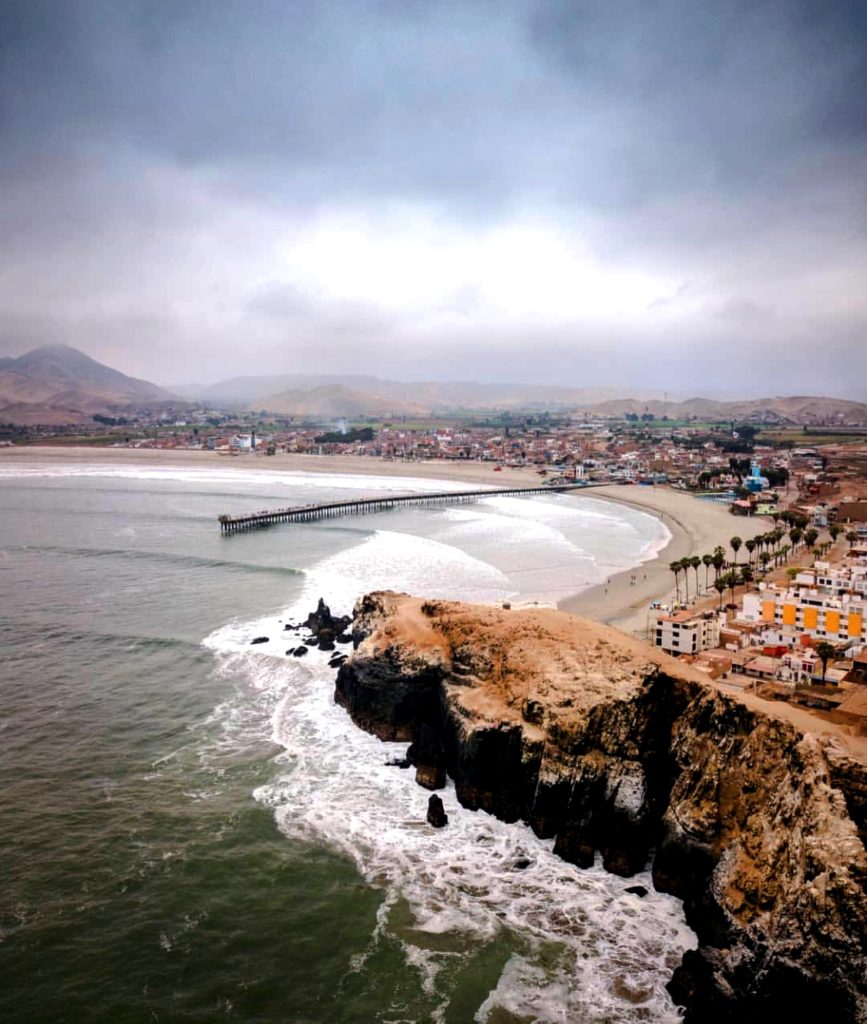SURF:
Been one heck of a way to close out the year. Lots of surf the past few weeks, a few windy/rainy days, and my arms are about to fall off from all that paddling. Well worth it though. Today we had a continuation of WNW swell, semi-clean conditions, and manageable crowds. We had a weak cold front move through Nor Cal today and the resulting swell picked up our NW again down here. Tonight we have peaking head high sets and that will start to back off on Friday to the chest high+ range. For Saturday/Sunday, we’re looking at waist to chest high surf for the weekend and clean conditions. Not exactly flat but not exactly the firing surf we’ve had lately. Water temps are holding at 60 degrees and tides this weekend have mellowed out- we’re back to 3′ at sunrise, down slightly to 2′ mid-morning, and back to 3.5′ late afternoon. For a more detailed THE Surf Report, check out http://northcountysurf.blogspot.com/.
FORECAST:
We’ve got some NW windswell/groundswell action filling in for Monday and beaches should have head high sets again. After that, things start off quiet for the new year with only waist to chest high NW most of next week. High pressure is the culprit and is blocking our storms in the Pacific. The Pasadena Chamber of Commerce likes it, but we don’t. We get another shot of chest high NW towards next Thursday the 3rd and maybe a better head high WNW around Sunday the 6th. And clean conditions with no rain in sight (or big surf).
WEATHER:
As mentioned above, high pressure is in control and any shot of rain is going up and over California. Models are showing offshore winds towards Tuesday and mild conditions most of next week. No complaints- we’ve received our fair share of rain lately- but hopefully we’ll get back into a wet pattern towards the 2nd week of January. Until then, enjoy the sunshine and get outside! Make sure to keep track of the waves and weather at http://twitter.com/NorthCountySurf.
BEST BET:
Mainly chest high surf tomorrow, New Year’s Eve, the 3rd, and possibly the 6th. Nothing too exciting to report.
NEWS OF THE WEEK:
If you haven’t noticed, it’s warm and getting warmer. Last month in fact was the fifth hottest November on record for the globe. 2018 year to date is also coming in as fourth hottest for planet Earth, according to scientists with NOAA’s National Centers for Environmental Information. Here’s highlights from NOAA’s latest monthly global climate report:
The average global temperature in November 2018 was 1.35 degrees F above the 20th-century average of 55.2 degrees. This was the fifth-highest temperature for November (tying with 2004 and 2016) in the 139-year record (1880–2018). November was also the 42nd consecutive November and 407th consecutive month with global temperatures above average.
The year to date | January through November:
The January-through-November period (YTD) average global temperature was 1.39 degrees F above the average of 57.2 degrees. This is the fourth highest YTD on record. Europe had its hottest YTD since continental records began in 1910, posting a continental temperature of 3.24 degrees F above average.
More noteworthy facts and stats:
A three-month heat spike: The period from September through November was the second warmest on record for the globe, with a temperature of 1.44 degrees F above average. Each continent, except North America, hit a temperature that ranked among the eight warmest on record for the three-month period.
Polar sea-ice coverage remains smaller than average:
Average Arctic sea ice coverage (extent) in November was 8.4 percent below the 1981–2010 average, the ninth smallest for November on record. However, Arctic sea ice extent increased faster than average for polar regions in the Northern Hemisphere. The Antarctic sea ice extent was 5.6 percent below average, the second smallest for November on record.
November on the other hand served up a meteorological mixed bag for the contiguous United States: Massive, deadly wildfires devastated entire communities in California and an early season blizzard hit the Midwest, while cool temperatures prevailed east of the Rockies and record rains fell in the East. Here’s what happened in the good ol’ U.S. of A. last month:
The average November temperature across the contiguous U.S. was 40.1 degrees F (1.6 degrees below average), ranking it among the coolest third of the 124-year record for November. States from the Great Plains to the East Coast had below average temperatures, while the West Coast and Florida, experienced above-average temperatures, according to scientists with NOAA’s National Centers for Environmental Information.
The average precipitation for November was 2.64 inches (0.41 above average), ranking it among the wettest third on record. Parts of the Mid-Atlantic and Northeast had record precipitation, while parts of the Northwest, Southwest and Southern Plains were drier than average.
The year to date and meteorological autumn:
It was the second-wettest meteorological autumn (September through November) on record for the contiguous U.S., with a precipitation total of 9.61 inches (2.73 inches above average). The average temperature for autumn was 53.8 degrees F (0.2 degrees above average), which ranked near the average of the 124-year record.
The average U.S. temperature for the year to date (January through November) was 55.2 degrees F (1.4 degrees above average) – the 16th warmest YTD on record. Average precipitation during this same period was 31.31 inches (3.72 inches above average), making it the fifth-wettest year to date on record.
Other notable highlights:
Raging wildfires in California caused catastrophic destruction and loss of life: The massive Camp Fire burned more than 153,000 acres in Northern California, claiming the lives of at least 88 people (as of this publication date) and destroying more than 18,000 structures. The Woolsey Fire killed at least three people and burned down more than 1,500 structures.
Record rainfall for 7 states: It was the wettest autumn on record for: Maryland, New Jersey, North Carolina, Rhode Island, Texas, Virginia and West Virginia.
States saw a record-breaking year to date: Eight states had record high year-to-date precipitation totals, while 13 states across the East and West had a top-10 warmest YTD.
Long story short- it’s never a dull moment around here and won’t be for awhile I’m guessing.
PIC OF THE WEEK:
I guess there’s more to Peru than just Chicama.
Keep Surfing,
Michael W. Glenn
Front Runner
Found Out I’m 188,778,709th In Line To The Throne
Drive A Big Rig For A Living Just In Case I Come Across Barrels So Big I Could Drive A Mack Truck Through Them

